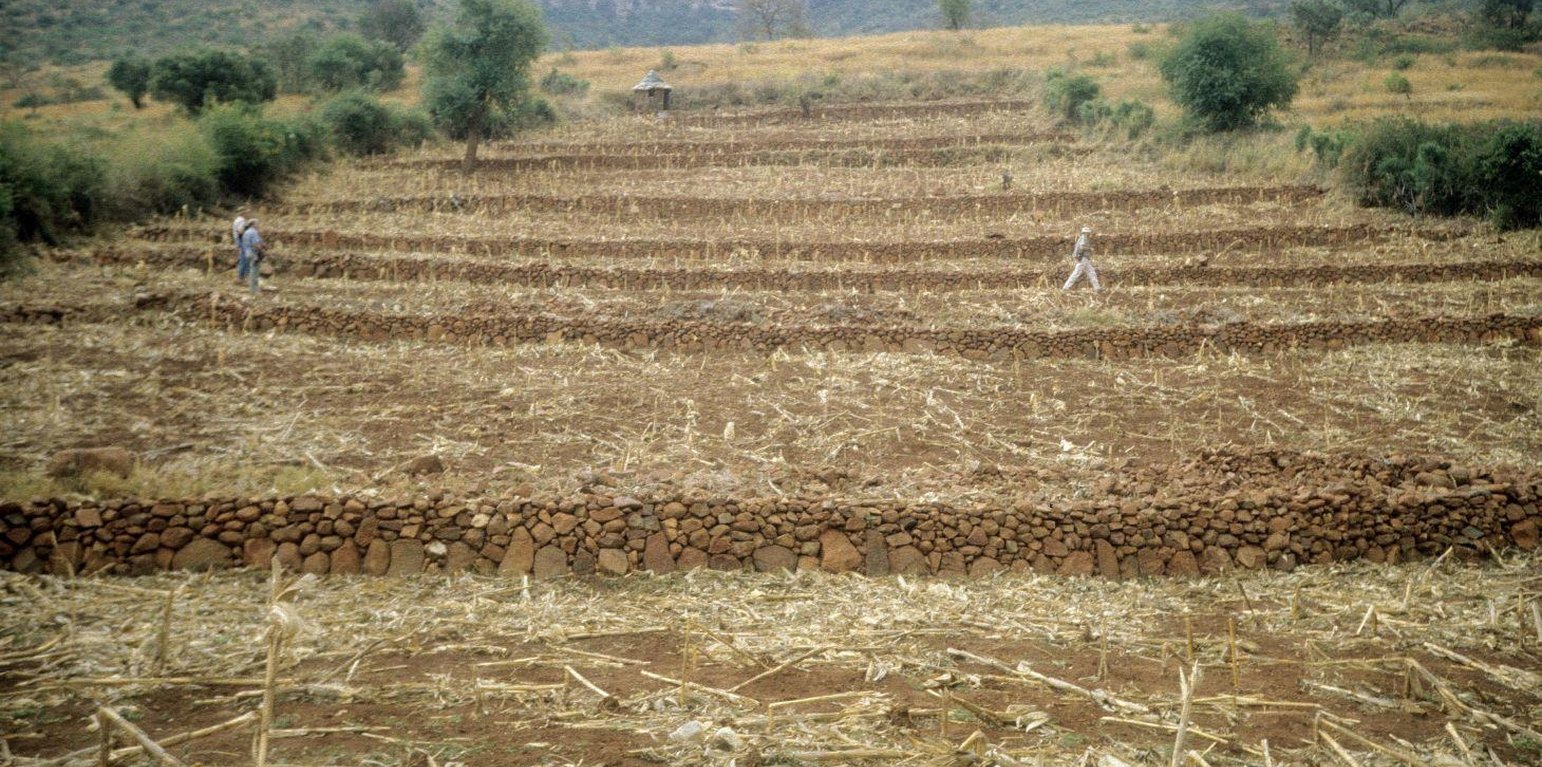



In this hilly, mixed farming area, stone terrace walls are a tradition. They are built across the slope when new land is cleared of loose stone and brought into crop cultivation. The dimensions of the terrace walls and the spacing between them depend on various factors, especially the slope and the amount of stone in the field. The walls may be up to 1.25 m high, from 1.0 to 1.5 m in base width, and between 20 and 50 m long. Spacing is from 3 to 10 m apart. Design of stone terrace walls varies. Some walls are very neatly built, others are merely piles of stone across the slope: this depends on the individual land user. The walls are built up each year with further stones: this may just be as more loose stone comes to the surface when ploughing, or also by digging out larger stones to deliberately build up the height of the walls as it silts up behind. Such terracing is generally confined to slopes between 20% and 50%. From 12% to 20% contour grass strips (thambaladza) are normally used, but below 12% land is rarely protected with structures or strips.
Purpose of the Technology: The purpose of terracing, apart from simultaneously clearing the land of stone, is to guard against loss of topsoil. Together with contour ploughing this helps to keep soil fertility in place on sloping cropland in a subhumid area. Rainfall is around 1,000 mm per annum and maize is the most common crop, but various other annuals (beans, pumpkins, sorghum etc) and perennials (peaches, avocadoes, oranges etc) are also grown.
Natural / human environment: This example of land conservation is probably unique in a former South African ‘homeland’. In such areas, where the black population were concentrated at high population densities under the former apartheid regime, land degradation rather than soil conservation was the rule. These terraces continue to be built to this day as new land is opened up, despite the high amounts of labour (300-500 person days per hectare) involved in establishment. A study of the conservation systems used in the area and local attitudes to them, showed that the benefits of conservation were well understood by local farmers (see reference). Those questioned identified retention of soil - and of soil fertility in particular - as being of paramount importance. No mention was made of terraces being built simply to remove surface stone. The only downside mentioned (by a few) was the loss of cultivable land area. The key to the persistence of the terraces in this area is, therefore, that the land users understand and appreciate the place of terraces in maintaining soil fertility, and their considerable contribution to crop production.
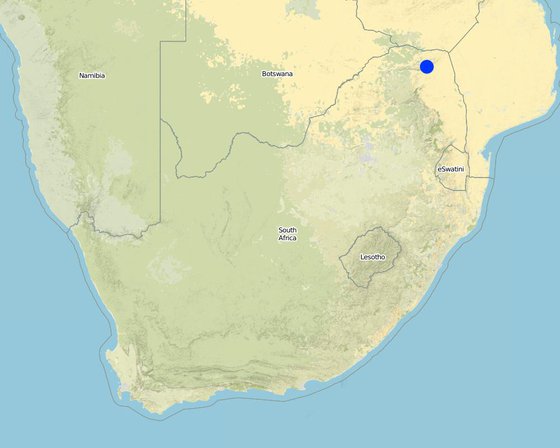
Lieu: Thononda Ward (Thohoyandou district), Limpopo Province, Afrique du Sud
Nbr de sites de la Technologie analysés:
Diffusion de la Technologie: répartie uniformément sur une zone (8.0 km²)
Dans des zones protégées en permanence ?:
Date de mise en oeuvre: il y a plus de 50 ans (technologie traditionnelle)
Type d'introduction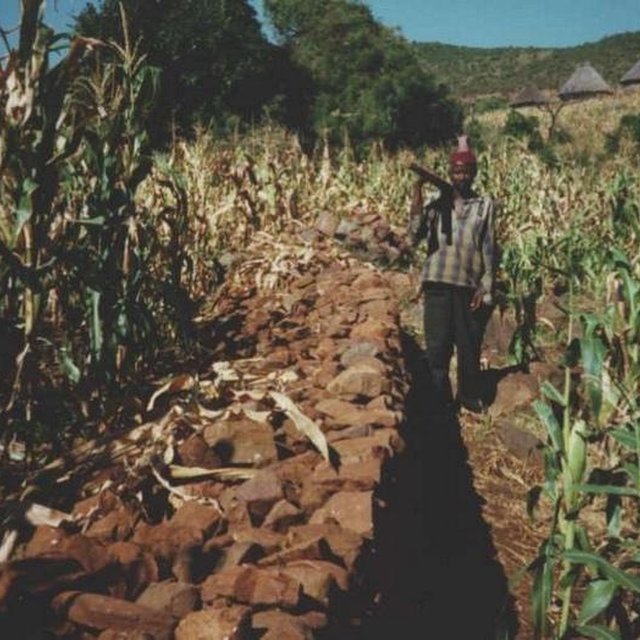
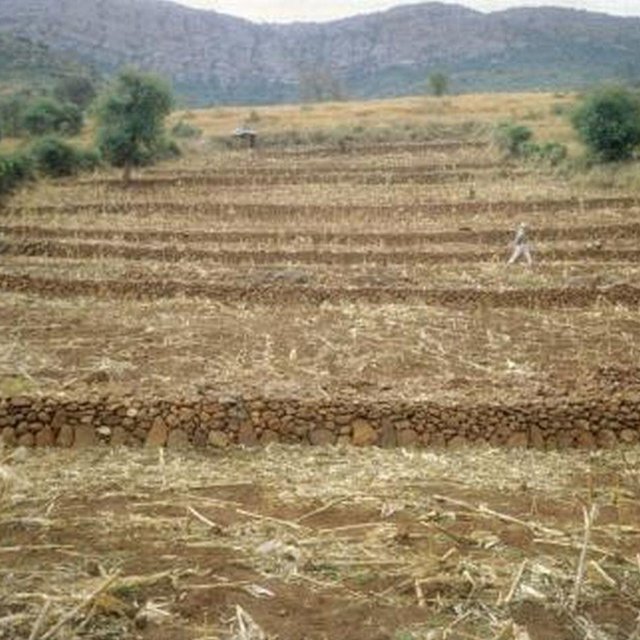





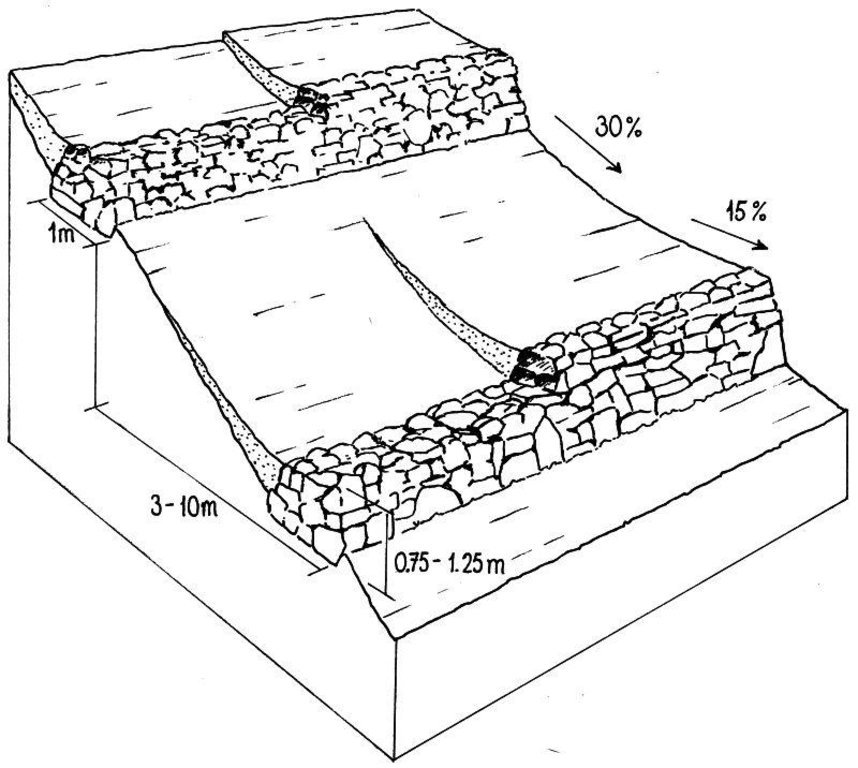
| Spécifiez les intrants | Unité | Quantité | Coûts par unité (dollars américains) | Coût total par intrant (dollars américains) | % des coût supporté par les exploitants des terres |
| Main d'œuvre | |||||
| Construction of stone walls and terraces | persons/day/ha | 357,0 | 3,5 | 1249,5 | 100,0 |
| Equipements | |||||
| Tools | ha | 1,0 | 20,0 | 20,0 | 100,0 |
| Coût total de mise en place de la Technologie | 1'269.5 | ||||
| Coût total de mise en place de la Technologie en dollars américains (USD) | 1'269.5 | ||||
| Spécifiez les intrants | Unité | Quantité | Coûts par unité (dollars américains) | Coût total par intrant (dollars américains) | % des coût supporté par les exploitants des terres |
| Main d'œuvre | |||||
| Increase hight | persons/day/ha | 46,0 | 3,5 | 161,0 | 100,0 |
| Coût total d'entretien de la Technologie | 161.0 | ||||
| Coût total d'entretien de la Technologie en dollars américains (USD) | 161.0 | ||||
Estimates
Estimates
Estimates
Estimates
Estimates